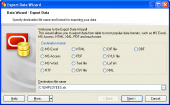Oracle Maestro online help
| Prev | Return to chapter overview | Next |
Role Editor
Role Editor allows you to edit role properties and permissions. It can be open automatically after the role is created and is available on editing (see How to edit role for details).
The basic principles of Object Editors in Oracle Maestro are considered in the corresponding topic. See below to find the description of editor tabs that are unique to the current object.
Name
The field allows you to view and modify the role name.
Identity type (By password, Externally, Globally, Using package, Not identified)
The role option indicates the specified method a user must be authorized by.
| • | The By password clause lets you create a local role and indicates that the user must specify the password to the database when enabling the role. The password can contain only single-byte characters from your database character set regardless of whether this character set also contains multibyte characters. |
| • | Specify Externally to create an external role. An external user must be authorized by an external service, such as an operating system or third-party service, before enabling the role. |
| • | Specify Globally to create a global role. A global user must be authorized to use the role by the enterprise directory service before the role is enabled, or at login. |
| • | The Using package clause lets you create an application role, which is a role that can be enabled only by applications using an authorized package. |
| • | Specify Not identified to indicate that this role is authorized by the database and that no password is required to enable the role. |
Package name
Set the package for Using package roles. If you do not specify schema, then the database assumes the package is in your own schema.
Password
Specifies the password that database users will use to activate the application role.
To apply the changes, select the Apply Changes item in the Navigation bar or use Ctrl+F9 or Ctrl+F7 shortcut keys.
It is also possible to modify object properties without opening the object editor: use the Object Properties item of the popup menu of the selected object from the explorer tree.
| Prev | Return to chapter overview | Next |





 Download
Download Buy
Buy
